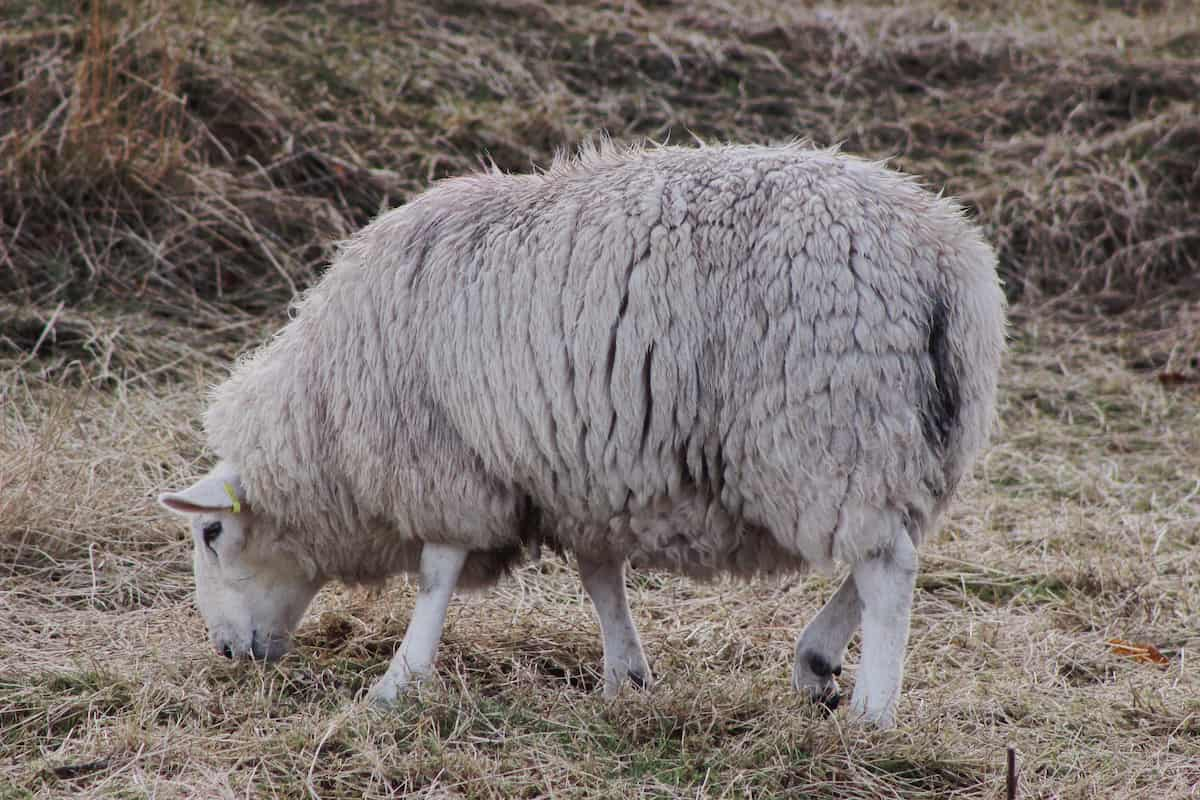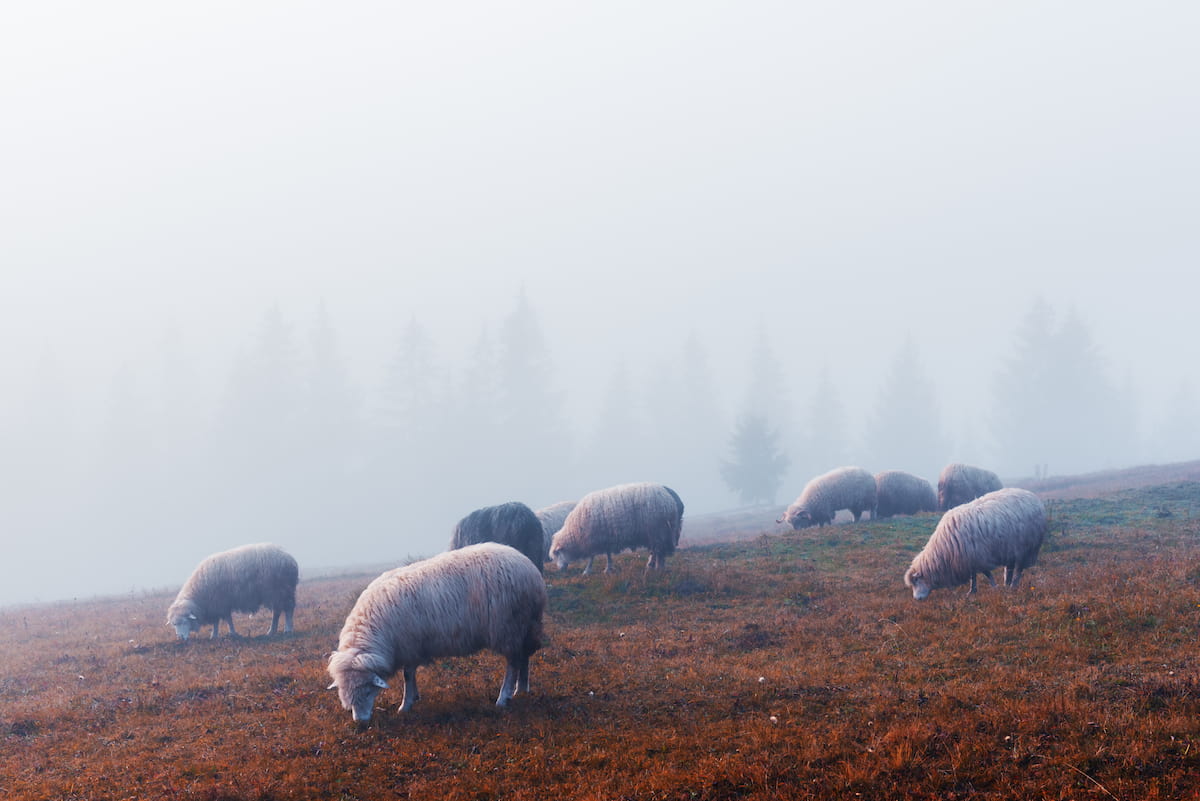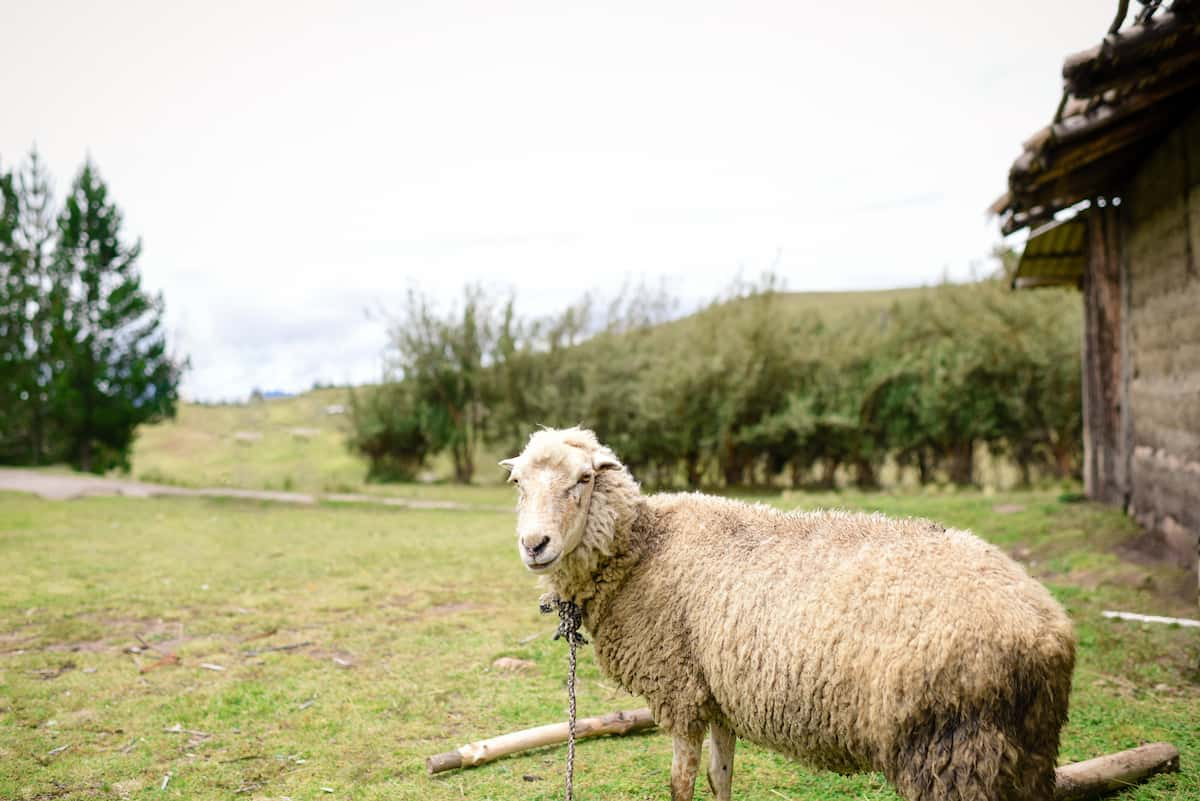Breeders of the Cheviot sheep raise them primarily for meat and wool production. They are named after a range of hills in North Northumberland and the Scottish Borders with the same name. Both males and females Cheviots are in constant demand for breeding purposes, which is a distinctive feature of the breed. Even today, these rams produce good lambs, especially with other hill breeds.

Sheep farmers might be interested in breeding and raising Cheviot sheep because of their meat, wool, and hardiness. In this article, we will take a quick look at the origin, history, and characteristics of the Cheviot sheep breed.
Cheviot Sheep Facts
History and Origin of Cheviot Sheep Breed
The Cheviot sheep is a breed of domestic sheep valued for its meat and wool production. On the border of England and Scotland, it originated in the Cheviot Hills. A range of hills located in north Northumberland and the Scottish Borders gave the breed its name. Since 1372, it has been recognized as an ancient breed. Despite being rare in other parts of the world, the breed is still common here in the United Kingdom.
However, it can also be found in northwest Wales, Ireland, Scotland, and the southwest of England (especially Exmoor and Dartmoor). Aside from its native area, the breed is also rare in the United States, New Zealand, and Australia. From their homeland, they were introduced to the United States in 1828. Exactly a century later, in 1938, this breed was introduced to Australia, where they proved successful, surviving the wet winters of Southern Australia. Additionally, they survived the dry and scorching summers, foraging for food despite food scarcity.
Varieties in Cheviot Sheep Breed
- Border Cheviot
- Brecknock Hill Cheviot
- North Country Cheviot
- Western Hilly Cheviot
- Wicklow Cheviot
Characteristics of Cheviot Sheep
- A Cheviot sheep is a large animal. Their heads and legs are wool-free, and they have distinctive white faces. Their ears are picked, their muzzles are black, and their feet are black.
- They are primarily white in color, and their wool is long. In general, rams and ewes are polled.
- However, the breed’s most distinctive feature is not its medium Cheviot wool but its pricked ears. There is no other sheep breed like the Cheviot sheep when it comes to its ears. Like rabbit ears, they stand upright.
- There is also no hair on the sheep’s legs. Their wool is generally long and soft, and they have black feet and black muzzles.
- They have long-staple, dense, and 56-50 quality fleece. Typically, mature Cheviot ewes produce 2.25 to 4.5 kg of fleece.
- Cheviot Rams are large animals weighing between 72 and 90 kg on average. The mature ewe weighs between 55 and 72 kilograms.
- The hard black feet of these animals make them less likely to get foot rot. Moreover, they tend to be resistant to worms and require less drenching, less crutching, and fewer fly strikes.
- Cheviot ewes are easy to lamb and often deliver twins. Their lambs are well-fed with milk.
- Additionally, they have excellent mothering instincts and are known to protect their lambs from harsh weather.
- As with most sheep breeds, Cheviot sheep have a gestation period between 149 and 155 days, with most ewes falling within this range.
- There is a 150-240 day lactation period for Cheviot ewes.
In case you missed it: Barbados Black Belly Sheep Facts: Origin, Physical Characteristics, Size, Pros, and Cons

Advantages of Rearing Cheviot Sheep Breed
- Dual-purpose breed: Raising dual-purpose animals is often a good choice for farmers looking for efficient livestock. You can also enjoy delicious lamb and meat from Cheviot sheep and excellent, high-quality wool. In most cases, they are not raised for their milk production.
- Excellent wool quality: Cheviot wool has a distinctive helical crimp characteristic of long-wool breeds. Wool has this quality, making it extremely durable and resilient. Despite its softness, it’s not the softest wool. It is often blended with other yarns to make Cheviot wool stronger and give it a longer-lasting quality.
- High-quality meat: Cheviot sheep have flavorful meat, like most meat breeds.
- Extreme hardiness: It is one of the few sheep breeds that can be raised almost anywhere. Due to the breed’s toughness can survive cold, wet winters and hot, dry summers. When the weather gets harsh, providing your sheep with the appropriate shelter is important. In any case, this independent sheep is pretty much capable of taking care of itself.
- The milk produced by ewes is also sufficient to feed the twins. According to production records, twin lambs grow at the same rate as single lambs.
- Cheviots spread out and forage for food wherever available, unlike most sheep breeds that gather to graze in one area.
- Since they are left in the wild from summer to winter, they are extremely resilient. Sheep, even lambs, of the Cheviot breed are good foragers and thrifty feeders.
- Cheviot sheep have crimped wool that springs back when touched. Additionally, they are more resistant to flystrike and fleece rot, which plague the sheep industry worldwide.
Disadvantages of Rearing Cheviot Sheep Breed
Even though the Cheviot is a solid breed, there are a few cons to consider. These Cheviot sheep disadvantages, however, are few and can be overcome to make raising Cheviots an enjoyable experience.
- There is difficulty handling them. The Cheviot sheep is not as docile as most sheep. New owners used to docile breeds should brace themselves for the ride that cheviots will take you on. They were extreme sports during shearing.
- There is a loose flocking instinct in Cheviot sheep. It’s best to keep them on large acres where you won’t have to round them often since they don’t like to follow each other. Due to this characteristic, they are difficult to herd, especially on small farms.
- Despite producing higher-quality meat, they produce less than similar breeds.
In case you missed it: Romney Sheep Facts: Origin, Physical Characteristics, Size, Pros, and Cons

Conclusion
Choosing a hardy and frugal breed of sheep that produces quality wool is a good idea to save money on feed. It is well known that they have excellent temperaments and are excellent mothers. Therefore, it’s perfect for those who want to raise their children alongside animals or simply enjoy having them around. While Cheviots have challenges and considerations, if you are looking for those qualities in your flock of sheep, you may want to consider raising this breed.
- Feed Your Flock for Less: Top 10 Tips to Save on Chicken Feed
- Ultimate Guide to Ossabaw Island Hog: Breeding, Raising, Diet, and Care
- Hatching Answers: The Top 10 Reasons Your Chickens Aren’t Laying Eggs
- Eggs and Economics: Breaking Down the Cost of Raising Backyard Chickens
- Defend Your Greens: Proven Methods to Keep Iguanas Out of Your Garden
- Ultimate Guide to Cinnamon Queen Chicken: A Comprehensive Guide for Beginners
- Ultimate Guide to California Tan Chicken: Breeding, Raising, Diet, Egg-Production and Care
- Ultimate Guide to Marsh Daisy Chicken: Breeding, Raising, Diet, and Care
- 10 Types of Chicken Farming Businesses You Can Start for Profits
I want to import cheviot sheep to Australia how can i get the list of breeders